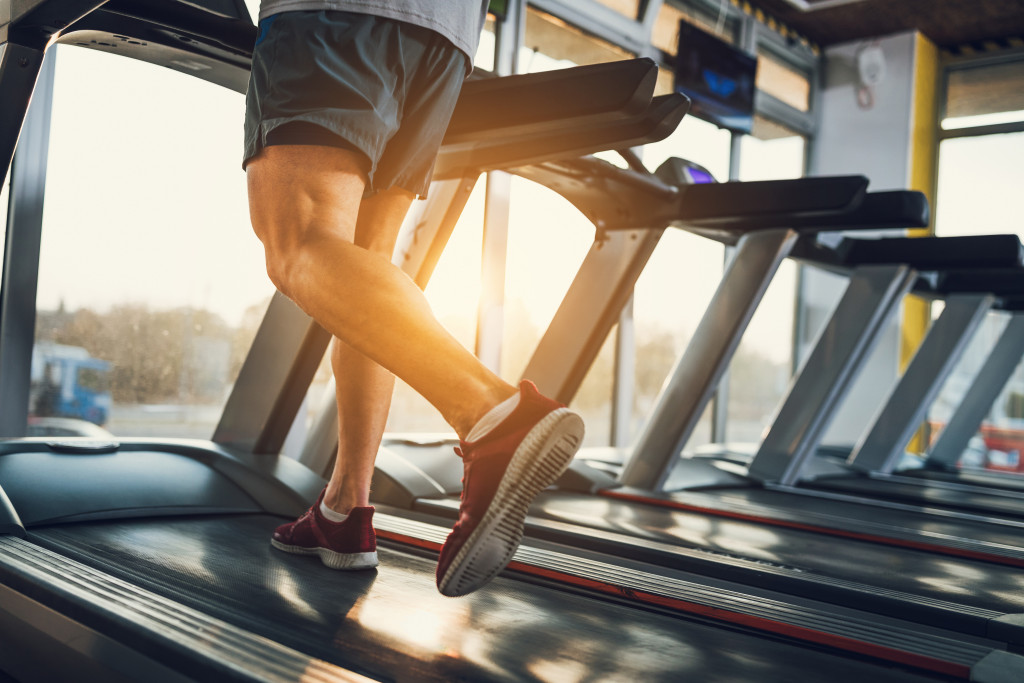The road to getting our dream bodies comes with its fair share of challenges, and one that will never escape us is post-workout muscle soreness. And no matter how athletic, determined, or motivated, you are – struggling from super sore muscles are never manageable under any circumstances.
This sore feeling is better known as Delayed Onset Muscle Soreness or DOMS for short, and it hits our bodies first thing in the morning after a grueling workout session. Depending on the severity, sore muscles can negatively impact your daily activities, and, in the best-case scenario, it is always a nuisance. What’s worse, DOMS can also hinder your next workout session’s effectiveness as it decreases your range of motion and prevents you from getting the full benefits of an exercise.
With that said, we can all agree that post-workout muscle soreness is a tough nut to break but a vital issue we need to address. So we’ve gathered seven simple practices you can implement right now to help alleviate the pain of sore muscles.
#1 Mix Static and Dynamic Stretching
Cool-down sessions play a considerable role in bringing the body back to a relaxed state but are often disregarded and forgotten. Stretching and allocating time for cool-down allows the body to adjust and return to its normal state, signaling the muscles to relax.
We suggest that you mix in static and dynamic stretching at the end of your workouts to give those worked muscles the chance to breathe and encourage recovery. Focus on areas that feel tight and avoid stretching too much or overexerting yourself.
#2 Trust The Foam-Roller
Intense workout sessions tend to build so much tension in our muscles. And it is often viewed as a satisfying burning sensation that overrides every other feeling during an exercise. While this feedback mechanism is a great way to guarantee effort exerted, your muscles end up needing more stimulation for relief.
To fix this problem, we suggest you take out the foam-roller and focus on myofascial release, applying sustained pressure to release tension and bring back range of motion to your muscles.
#3 Low-Intensity Exercise
Another great alternative you can add to the end of your workout sessions is active recovery, which uses low-intensity exercises after any intense workout routines. Activities include walking on the treadmill, rowing, and any other low-intensity training to help your body recover from the strenuous workload.
Instead of coming to a complete stop, the addition of low-intensity exercises keeps blood flowing and is another form of cool-down that encourages the body to stimulate muscle recovery. It lessens lactic build-up and is a great way to end any workout.
#4 Get A Massage
If you have access to a massage therapist or a professional specializing in sports/athletic massage, we suggest you take the opportunity. While self-massage will work in most cases, there is a vast difference in effectiveness when in the hands of a professional who can pinpoint areas of soreness.
Naturally, there are spots you’ll have trouble reaching on your own, and an experienced sports massage therapist can help bridge that gap to help alleviate soreness in hard-to-reach muscles.
#5 Don’t Forget to Shower
Important clothes go through dry cleaning to keep them in perfect condition. And as a rule of thumb, we should also discipline ourselves the same way and shower after workouts to rid the body of all the built-up sweat, grime, and dirt.
Apart from cleanliness, taking a shower also has surprising benefits in alleviating any muscle soreness as hot temperatures can encourage blood flow and muscle recovery. Cold showers also lessen lactic build-up, which makes them an excellent candidate for ending workouts.
#6 Sleep Right
One thing we can’t forget is the importance of sleeping right and getting enough as this is where most of the muscle recovery and building occurs. Depriving yourself of sleep will prevent your muscles from getting the chance to recover and will leave you with soreness that can last longer than expected.
So do yourself a favor and don’t match intense workouts with all-nighters. Your body is a vessel that needs to rest, and your muscles are begging for recovery.
#7 Focus On Nutrition
Lastly, we can’t dismiss the significance of nutrition when dealing with post-workout muscle soreness. While we don’t want to be the one to keep hammering down the idea that abs are made in the kitchen, it is a fact that we can’t deny.
If you put junk back into your body, don’t expect that junk to be useful for muscle building and recovery. Eat food filled with nutrients and consider eating those rich in omega-3, as this has been observed to speed up recovery time.
Listen To Your Body
No one wants to deal with post-workout muscle soreness, but if we don’t put in the effort, we’ll forever be doomed to struggle. So consider these practices and slowly implement them into your workout plan. You’ll soon start seeing significant changes in recovery time, and you’ll be back in the gym much faster than before.

